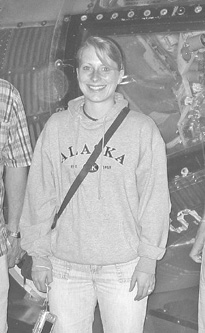Associate Professor Jennifer King recently coauthored an important paper published in the Journal of Geophysical Research – Biogeosciences. The paper, written in conjunction with her graduate student and an undergraduate student, reports experimental results showing that solar radiation directly results in degradation of plant litter and fluxes of carbon dioxide to the atmosphere. This is important new work that helps to elucidate the mechanisms of photodegradation (decomposition due to solar radiation). The authors show that ultraviolet wavelengths are important to photochemical production of carbon dioxide, and they found that some visible wavelengths also result in photodegradation. The article (Brandt, L. A., C. Bohnet, and J. Y. King [2009], Photochemically induced carbon dioxide production as a mechanism for carbon loss from plant litter in arid ecosystems, J. Geophys. Res., 114, G02004, doi:10.1029/2008JG000772) was selected as a highlighted paper by the Journal’s editorial board.
Abstract:
We investigated the potential for abiotic mineralization to carbon dioxide (CO2) via photodegradation to account for carbon (C) loss from plant litter under conditions typical of arid ecosystems. We exposed five species of grass and oak litter collected from arid and mesic sites to a factorial design of ultraviolet (UV) radiation (UV pass, UV block), and sterilization under dry conditions in the laboratory. UV pass treatments produced 10 times the amount of CO2 produced in UV block treatments. CO2 production rates were unaffected by litter chemistry or sterilization. We also exposed litter to natural solar radiation outdoors on clear, sunny days close to the summer solstice at midlatitudes and found that UV radiation (280–400 nm) accounted for 55% of photochemically induced CO2 production, while shortwave visible radiation (400–500 nm) accounted for 45% of CO2 production. Rates of photochemically induced CO2 production on a per‐unit‐mass basis decreased with litter density, indicating that rates depend on litter surface area. We found no evidence for leaching, methane production, or facilitation of microbial decomposition as alternative mechanisms for significant photochemically induced C loss from litter. We conclude that abiotic mineralization to CO2 is the primary mechanism by which C is lost from litter during photodegradation. We estimate that CO2 production via photodegradation could be between 1 and 4 g C m−2 a−1 in arid ecosystems in the southwestern United States. Taken together with low levels of litter production in arid systems, photochemical mineralization to CO2 could account for a significant proportion of annual carbon loss from litter in arid ecosystems. (The complete text can be found at http://www.agu.org/journals/jg/jg0902/2008JG000772/)




